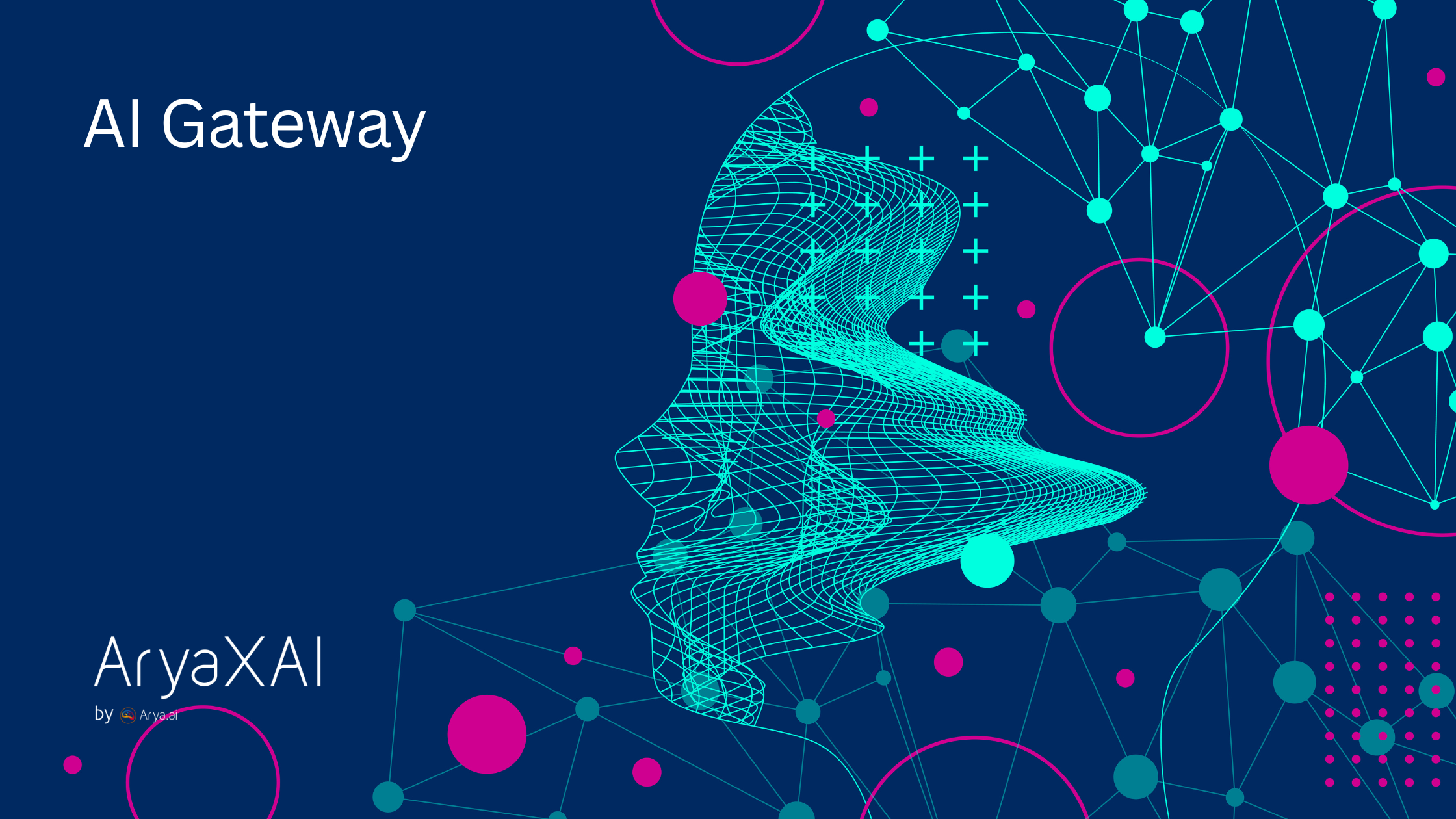What Are AI Hallucinations? Understanding Their Impact and Solutions
10 minutes
February 24, 2025

AI hallucinations are a significant concern in artificial intelligence. Chatbots hallucinate frequently, meaning conversational AI systems are particularly prone to generating false or misleading information. AI researchers are actively working to address the challenges posed by AI hallucinations. AI hallucinations refer to instances where AI models, particularly large language models (LLMs), generate false or misleading information that they present as factual. As highlighted by MIT Technology Review, this phenomenon poses technical and ethical challenges across various industries, potentially leading to the spread of misinformation and flawed decision-making. Explainable AI is a powerful tool that is central to addressing the challenges of AI hallucinations, significantly enhancing transparency and trust in AI systems.
Understanding AI Hallucinations
AI models, particularly large language models (LLMs), at times provide information that is sound but entirely fabricated or false. Such a condition is referred to as AI hallucination, and it is a matter of serious concern in artificial intelligence. It poses a serious challenge in numerous sectors, as it can result in the dissemination of misinformation and eventually, poor decision-making.
What exactly are AI Hallucinations?
AI hallucinations occur when an AI system misinterprets nonexistent patterns or objects and provides nonsensical or incorrect outputs. Imagine a human perceiving shapes in clouds; the AI "sees" something that isn't there and provides it as fact. Such incorrect outputs are usually referred to as "confabulations" and can be factually incorrect, misleading, or even contradictory.
Real-World Examples of AI Hallucinations
AI hallucinations aren't all the same; they can manifest in various ways, from making up facts to contradicting themselves or even completely ignoring the prompt they were given. These issues cause major headaches in real-world applications where accuracy is important. Here are some common examples, along with some statistics to show their impact:
Factual Contradictions
Sometimes, an AI will confidently state something that is simply untrue. For example, OpenAI's GPT-3 once incorrectly claimed that the James Webb Space Telescope (JWST) took the first images of an exoplanet. The truth is, the European Southern Observatory's Very Large Telescope (VLT) captured those first successful exoplanet images back in 2004.
According to a 2021 study by the AI Alignment Forum, 28% of factual errors in AI-generated responses were related to misidentification of scientific facts. This highlights that hallucinations can come in crucial knowledge areas like science and healthcare, where such errors could lead to widespread misinformation or poor decision-making.
Internal Contradictions
Another type of AI hallucination occurs when the AI generates sentences that contradict each other within the same output. Imagine an AI model saying:
- "The grass was green."
- "The mountains were blue."
- "The river was purple."
- "The grass was brown."
While creative, this is nonsensical and directly contradicts the earlier statement about the grass's color. A report by Stanford University found that about 15% of outputs from large language models (LLMs) used for creative tasks in 2022 contained some form of internal contradiction. These kinds of contradictions can significantly erode user trust in AI-generated content, especially in customer-facing tools like chatbots or automated writing assistants, where consistency is key for credibility.
Prompt Contradictions
AI-generated content can also completely disregard or contradict the original input prompt. For instance, if you ask an AI to write a birthday card for your niece, it might instead produce:
"Happy anniversary, Mom and Dad!"
This obviously confuses the user and makes the AI's response irrelevant or inappropriate. A 2023 Forrester Research survey revealed that 39% of consumers felt that low-quality AI responses, including irrelevant or contradictory answers, negatively affected their trust in a brand. The research also noted that 22% of respondents said they would be less likely to trust an AI-powered service after encountering a hallucinated response.
A study published recently by Stanford researchers examined specifically how frequently hallucinations have been found to occur in legal research AI applications. Despite promises that Retrieval Augmented Generation (RAG) would limit hallucinations, LexisNexis and Thomson Reuters applications still got things wrong. Lexis+ AI got it wrong 17% of the time, and Ask Practical Law AI got it wrong 34% of the time. These models of AI don't merely fabricate legal information, but also misapply or misquote legal sources, resulting in inaccurate conclusions. Even some systems reinforce false presumptions made by the user, causing them to be even less accurate. These results are indicative of the absolute necessity for transparency, quality assurance testing, and human oversight when applying AI in legal practice to avoid deceptive or damaging results.
The ease with which AI systems can stray from expected outputs is a serious concern, particularly when precision and relevance are paramount. These inaccuracies don't just affect user experience; they have real-world implications. According to the AI Alignment Forum, AI hallucinations contribute to a 25% increased risk of misdiagnosis or poor financial decisions in sectors like healthcare and finance. As AI becomes more integrated into various fields, preventing these hallucinations is vital for its responsible and proper use.
The Impact of AI Hallucinations
AI hallucinations aren't just a technical glitch; they have far-reaching consequences across various industries, sometimes with disastrous and irreversible outcomes. Let's explore the major concerns associated with AI hallucinations:
Spread of Misinformation
AI models, especially language models, can churn out vast amounts of content in real-time. While this capability allows for rapid dissemination of accurate information, it also means incorrect or misleading content can spread very quickly. When an AI system produces false information, it can significantly contribute to the spread of misinformation. In the media, AI-driven tools for content generation or news reporting might publish incorrect information without enough human oversight. A 2022 report from The Reuters Institute found that 34% of online news consumers have faced AI-generated false or misleading content, which could potentially sway public opinion and influence policy. This is particularly dangerous when AI is used to create news articles, scientific papers, or social media posts that can shape public beliefs and behaviors.
Flawed Decision-Making
Hallucinations in AI models result in the making of wrong decisions in crucial areas such as healthcare, finance, and legal services. For instance, a health chatbot could provide erroneous medical advice that results in actions based on flawed recommendations. In the same way, AI models in the field of finance may misinterpret intricate data, leading to undesirable investment strategies or incorrect risk evaluations. According to a survey by Accenture, 22% of healthcare professionals disclosed that they had faced situations where AI had made erroneous diagnoses or treatments, which might harm patients. For finance, the University of Cambridge disclosed that 18% of financial AI models were found to be giving deceptive advice, which could result in significant financial losses or even lawsuits.
Regulatory & Compliance Risks
As AI systems increasingly find their way into highly regulated industries such as health, finance, and self-driving cars, the possibility of AI hallucinations becomes even more important. If an AI model generates wrong information, it will result in non-compliance, then financial or legal fines. In the healthcare space, an AI-powered system giving recommendations must go through regulatory checks such as FDA in the United States or EMA in the European Union. Equally, autonomous vehicles have to meet stringent road safety regulations. Hallucinations that lead AI systems to make decisions based on incorrect or incomplete data can lead to fines or penalties by regulatory agencies. In 2023, McKinsey projected that close to 40% of companies in regulated sectors were worried about AI compliance risks, mainly for AI-driven content generation and decision-making activities.
Security & Cyber Risks
AI hallucinations can also introduce serious security and cyber risks. AI tools used for cybersecurity, such as threat detection systems or anomaly detection algorithms, could misinterpret data and miss critical threats. A hallucination in such a system could allow cybercriminals to exploit vulnerabilities or manipulate security systems without detection. Furthermore, malicious actors could leverage AI-generated fake data to manipulate systems, commit fraud, or spread disinformation. In 2021, the Cybersecurity & Infrastructure Security Agency (CISA) found that AI-based security systems missed 19% of simulated cyberattacks because threat data was misclassified. Another example: AI-generated phishing emails have been found to be 25% more effective than traditional phishing attempts, as per Proofpoint.
Ethical & Bias Challenges
Hallucinations can worsen existing ethical and bias-related challenges in AI. Since AI models are trained on large datasets, biases in that data can influence AI outputs. For example, AI systems trained on biased data might produce content that discriminates against certain social groups or reinforces harmful stereotypes. Moreover, generating false information raises ethical dilemmas, especially when AI systems influence public trust or decision-making. An MIT study showed that 15% of AI-generated text outputs reinforced gender bias, and 12% reinforced racial stereotypes, which means AI hallucinations could further contribute to social inequality.
Trust Issues & Brand Risks
Trust is definitely critical to the mass take-up and utilization of AI technologies. Repetitive hallucinations, however, are very effective at wearing away user trust. As customers or users repeatedly see AI-generated content that is incorrect, irrelevant, or contradictory, trust in the technology and the company that developed it can easily evaporate. For companies that are dependent on AI services such as chatbots, automated assistants, or AI-powered customer support, high-frequency hallucinations can result in lost clients, a tarnished brand image, and a financial hit. According to a 2023 report by PwC, 42% of companies within AI-based businesses saw their reputation tarnished because of AI mistakes, resulting in a 27% drop in customer loyalty and a 19% drop in market share. Evidently, AI hallucinations have extensive ramifications. While AI brings enormous value in enhancing effectiveness and redefining industries, preventing these hallucinations is crucial to making sure that AI technologies are reliable, ethical, and aligned with industry standards.
How to Prevent AI Hallucinations
While completely eliminating AI hallucinations might not be possible, there are several effective strategies and approaches that can help reduce their occurrence and impact. These methods include improving the data used to train AI systems, refining how models are built, and enhancing monitoring and regulation capabilities. Below are the key strategies for preventing AI hallucinations:
Improve Data Quality
High-quality, accurate, and varied training data is the key to reducing hallucinations. When datasets are consistent and unbiased, AI models trained on them are far less likely to generate false or misleading information. Data quality improvements involve actively deleting errors, inconsistencies, and biases. As an example, a Stanford University study revealed that models trained with high-quality, diversified data worked30% more effectively in producing accurate and relevant information than models trained on poor-quality data. Consistency of training data is central to reducing hallucinations.
Refine Training and Generation Methods
It's important to train AI models in a way that minimizes biases, overfitting, and overgeneralization. These issues can cause an AI system to produce outputs that simply reinforce stereotypes or falsehoods. Overfitting, for example, makes a model too rigid, preventing the AI from accurately understanding new information. Training methods should also include real-world scenarios so the model can generalize well across different situations. Large language models like GPT-3, for example, benefit from continuous learning and feedback mechanisms that allow them to adapt to evolving language trends and new factual knowledge.
Use Precise Input Prompts
Better and more accurate results are produced by AI systems when they have specific, well-defined input. Vague or contradictory input in the command can mislead the model and induce hallucinations. Users can minimize the likelihood of receiving an error message by avoiding contradictory or vague commands. OpenAI research has established that a precisely defined, structured input can decrease hallucinations as much as 40% in language models. Thus, giving clear prompts that do not have too much scope for interpretation is necessary to direct AI systems towards more precise outcomes.
Utilize Data Templates
Data templates help standardize the input AI models receive, ensuring they adhere to predefined guidelines. By offering structured frameworks for generating responses, templates can limit the AI models' freedom to create content that deviates from facts. This approach has proven particularly useful in fields like drafting legal documents and financial reporting, where accuracy and adherence to regulations are strictly required. An IBM report revealed that using templates in AI-based applications for regulatory compliance reduced hallucinations and errors by 25%.
Set Clear Boundaries
Carefully establishing boundaries for AI models is important to prevent them from generating wildly off-target responses. Automated reason checking, filtering software, and probabilistic limits can assist in guaranteeing that AI system output remains within reasonable bounds. Establishing a precise "truth set" which AI systems must abide by can sharply reduce hallucination risk. This is particularly valuable in fields such as healthcare and law, where accuracy of facts is most important. An Amazon Web Services (AWS) survey discovered that incorporating automated reasoning checks cut hallucinations by 35% in sophisticatedAI models.
Embrace AI Explainability & Transparency
For users to trust AI systems, decision-making processes must be explainable and transparent. Explainability in AI enables users to learn why a particular output was produced and under what circumstances. This not only establishes user trust but also facilitates the detection of errors or hallucinations. As an example, Google DeepMind's "Explainable AI" (XAI) project permits users to observe what factors impact an AI's decision, allowing for real-time verification and detection of possible hallucinations. Through greater transparency, users can step in and correct AI output before it becomes an issue.
Implement Human-in-the-Loop Processes
Incorporating human oversight into AI workflows is one of the most powerful strategies to ensure the accuracy of AI outputs. The Human-in-the-Loop (HITL) technique supports instant validation of AI-generated content, especially for questionable outputs. In sectors like healthcare, finance, and law, this can prevent harmful consequences from hallucinations. HITL systems provide a layer of quality control, allowing human experts to assess AI outputs before they're shared with end-users. PwC found that 48% of AI models in regulated industries included some form of HITL oversight, significantly improving the quality and trustworthiness of AI outputs.
Model Alignment & Risk Monitoring
Regularly monitoring and aligning AI models with factual data is essential for preventing hallucinations. This helps keep the AI model updated with current world facts. Aligning AI models with trusted, verified sources of information—such as government databases, scientific journals, and industry standards—reduces the chances of errors. Additionally, organizations should monitor the behavior of AI systems in real-time to detect emerging hallucinations and correct them.
The integration of risk monitoring tools, similar to those employed by Microsoft and Amazon, has been shown to decrease hallucinations by as much as 40% by flagging potentially inaccurate outputs that shouldn't be disseminated. These strategies, when deployed throughout the development, deployment, and monitoring of AI systems, can significantly reduce the likelihood of hallucinations and improve reliability and trust in AI across diverse applications.
However, continuous research, user feedback, and ethical considerations are vital for making AI systems more transparent, accountable, and fault-free in the future.
Amazon's Bet on Automated Reasoning
Amazon is working actively to overcome AI's propensity for inventing answers using "automated reasoning." Amazon Web Services (AWS), the cloud-computing division of the company, is applying this technique to offer mathematical evidence that AI model hallucinations can be prevented, at least in certain domains. AWS is looking to infuse knowledge in AI systems through mathematical logic so that these AI model hallucinations do not occur.
Automated reasoning, which is a symbolic AI subfield based on mathematical logic, gives a mathematical demonstration to guarantee that a system acts as desired.
AWS' Automated Reasoning Checks is designed to provide customers with assurances of truth, particularly in high-stakes scenarios. To implement it, customers create policies that are the "absolute truth," like an enterprise's internal playbook or product documentation. Automated Reasoning Checks also enables Bedrock Guardrails, AWS' product with enterprise-grade protections such as filters and blocking tools for objectionable content. Byron Cook, AWS Vice President and Distinguished Scientist, admitted that eliminating hallucinations completely is "undecidable" but said tools could be constructed to give accurate answers.
Conclusion
AI hallucinations pose a significant challenge in developing reliable and trustworthy AI systems. While complete elimination might be impossible, continuous research and the application of the strategies mentioned above can significantly mitigate their occurrence and impact. As AI continues to integrate into all aspects of our lives, addressing and minimizing hallucinations is crucial for embracing its potential responsibly and ethically. Constant monitoring, validation, and refinement of AI models are necessary to ensure they produce accurate and beneficial outputs, which will ultimately increase confidence and acceptance of their use in various applications.
SHARE THIS
Discover More Articles
Explore a curated collection of in-depth articles covering the latest advancements, insights, and trends in AI, MLOps, governance, and more. Stay informed with expert analyses, thought leadership, and actionable knowledge to drive innovation in your field.

Is Explainability critical for your AI solutions?
Schedule a demo with our team to understand how AryaXAI can make your mission-critical 'AI' acceptable and aligned with all your stakeholders.



.png)
















.png)



